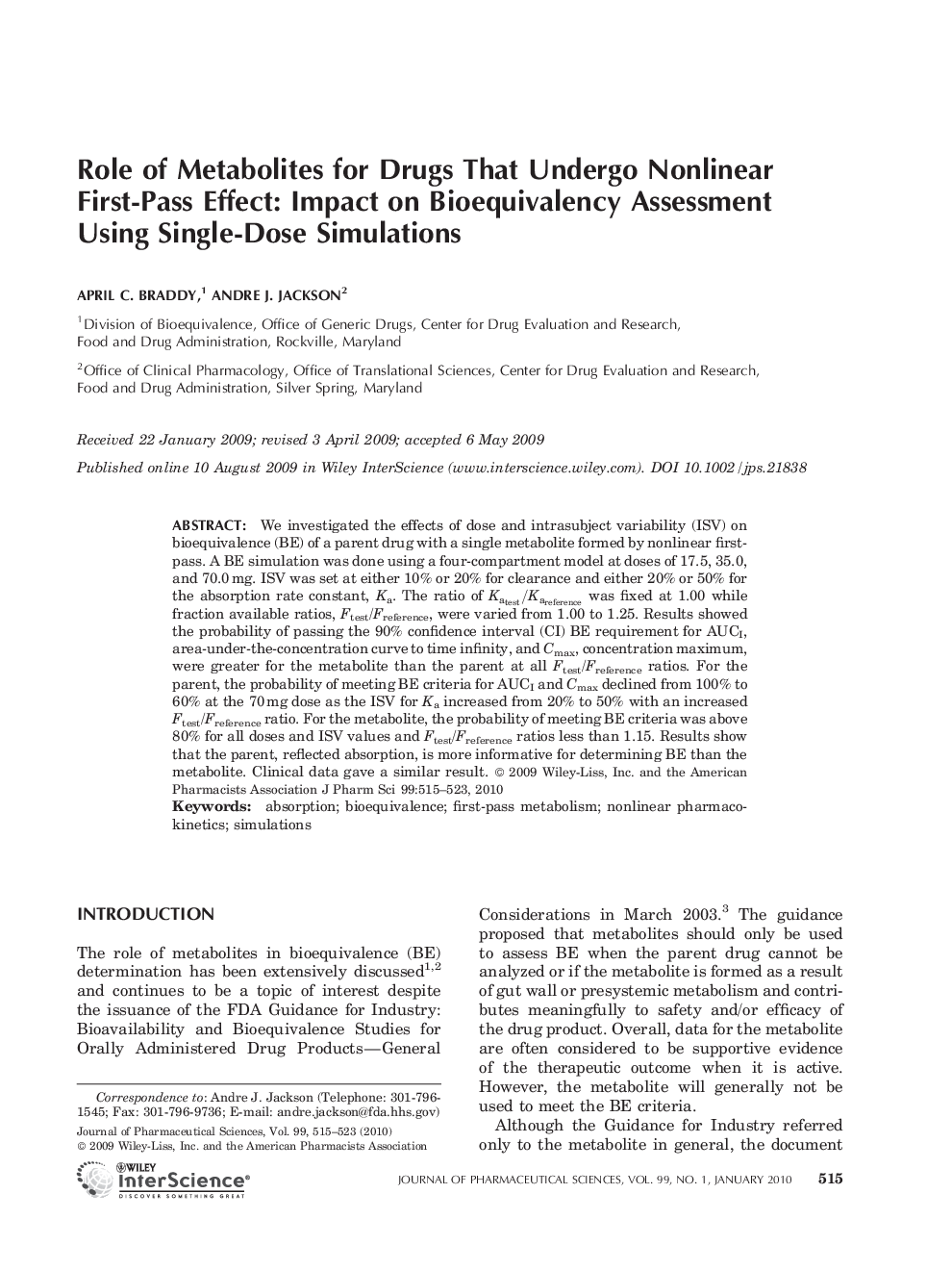| Article ID | Journal | Published Year | Pages | File Type |
|---|---|---|---|---|
| 2486251 | Journal of Pharmaceutical Sciences | 2010 | 9 Pages |
Abstract
We investigated the effects of dose and intrasubject variability (ISV) on bioequivalence (BE) of a parent drug with a single metabolite formed by nonlinear first-pass. A BE simulation was done using a four-compartment model at doses of 17.5, 35.0, and 70.0âmg. ISV was set at either 10% or 20% for clearance and either 20% or 50% for the absorption rate constant, Ka. The ratio of test/Kareference was fixed at 1.00 while fraction available ratios, Ftest/Freference, were varied from 1.00 to 1.25. Results showed the probability of passing the 90% confidence interval (CI) BE requirement for AUCI, area-under-the-concentration curve to time infinity, and Cmax, concentration maximum, were greater for the metabolite than the parent at all Ftest/Freference ratios. For the parent, the probability of meeting BE criteria for AUCI and Cmax declined from 100% to 60% at the 70âmg dose as the ISV for Ka increased from 20% to 50% with an increased Ftest/Freference ratio. For the metabolite, the probability of meeting BE criteria was above 80% for all doses and ISV values and Ftest/Freference ratios less than 1.15. Results show that the parent, reflected absorption, is more informative for determining BE than the metabolite. Clinical data gave a similar result. © 2009 Wiley-Liss, Inc. and the American Pharmacists Association J Pharm Sci 99:515-523, 2010
Related Topics
Health Sciences
Pharmacology, Toxicology and Pharmaceutical Science
Drug Discovery
Authors
April C. Braddy, Andre J. Jackson,
